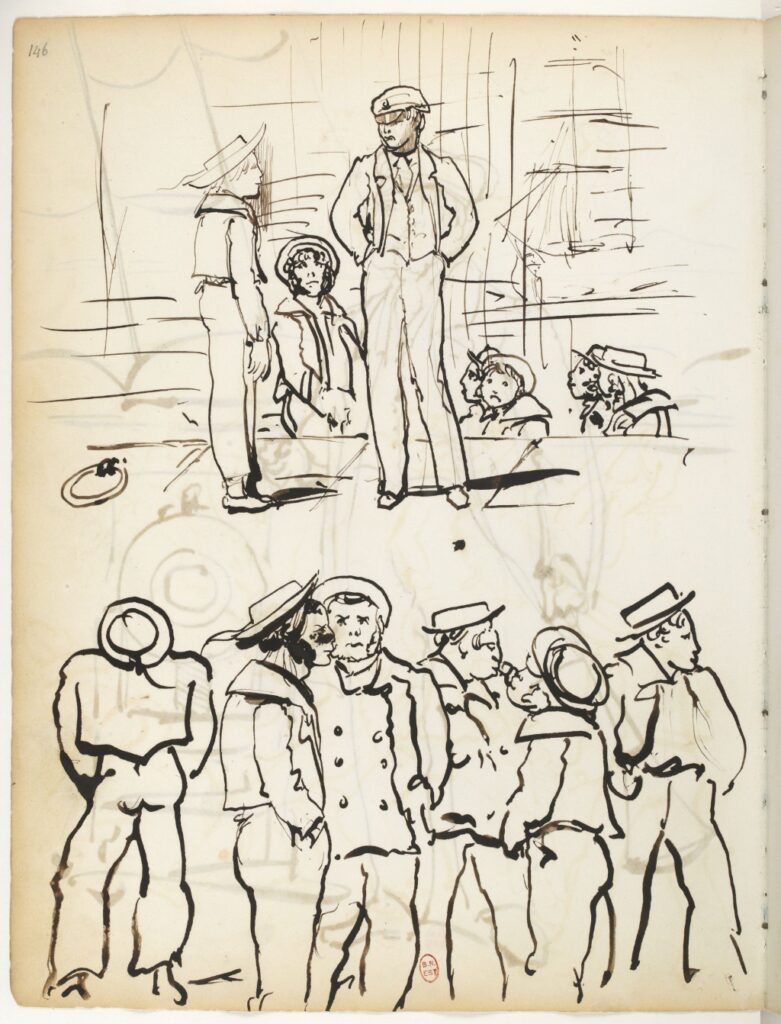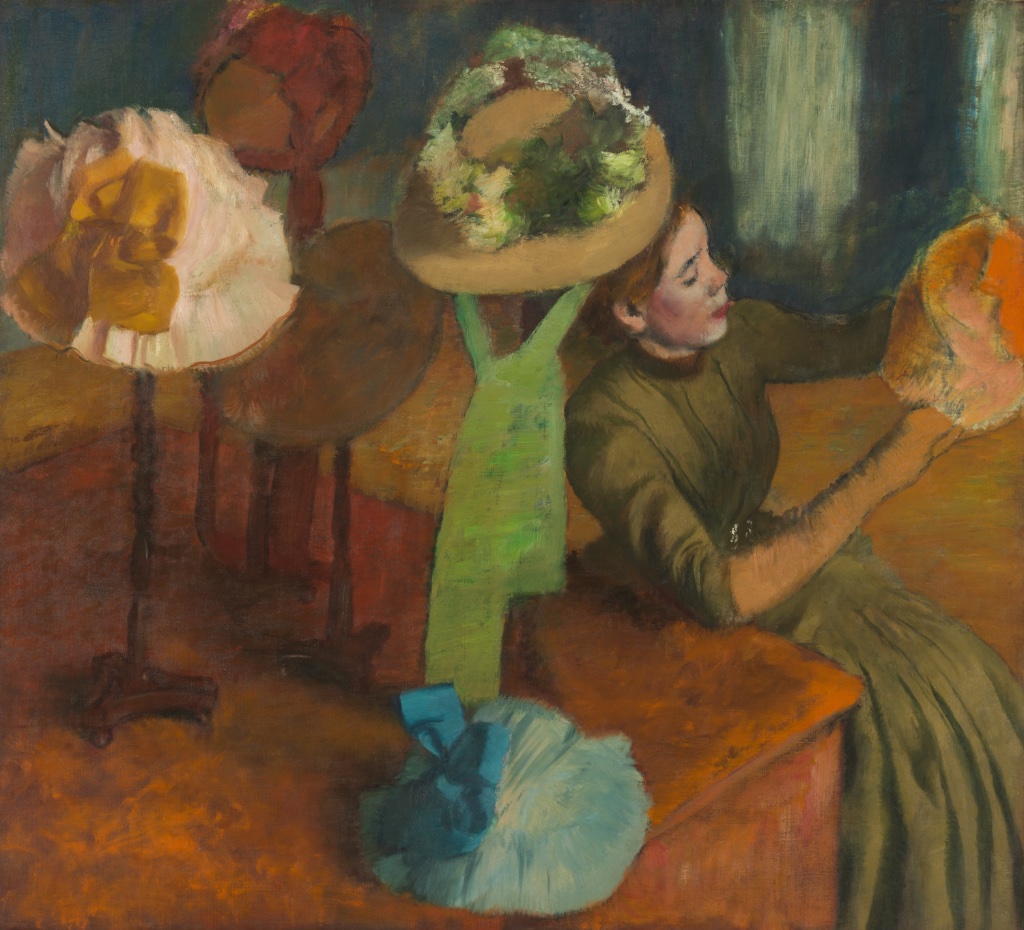
Is there anything new to say about Edgar Degas? Anything produced by one of the best-known 19th-century French artists, so famous for his paintings and pastels of ballerinas and horses, that we haven’t already seen over and over? It turns out that there is, and two current exhibitions in Paris show that there is still much to be learned about him and his contemporary Édouard Manet: “Degas en Noir et Blanc” (“Degas in Black and White,” through Sept. 3), at the Bibliothèque Nationale de France-Richelieu, and “Manet/Degas” (through July 23), at the Musée d’Orsay.
The exhibition at the BNF starts out with a salient quote from Degas (1834–1917) at the end of his life: “If I had to do it all over again, I would work only in black and white.” A tour of the show is enough to convince visitors that it wouldn’t have been such a bad idea.
Always interested in engraving, Degas “reinvented” the monotype, tried his hand at lithography, took up photography and, late in life, made numerous charcoal drawings on tracing paper. He was a master of all. This lovely exhibition gives us examples of each.
Here we see an artist always working, always searching for new techniques and new ways of expressing himself, from the various engraving techniques to photography, which he used toward the end of his life as a research tool and to satisfy his newfound passion for the medium. Especially delightful are the drawings and sketchbooks of the artist, full of scenes captured on the fly: sailors dawdling in the street, some hefty dancers at a public ball, a moody scene of travelers on a road through a dark forest – as well as the more familiar subjects of ballet dancers and women bathing.
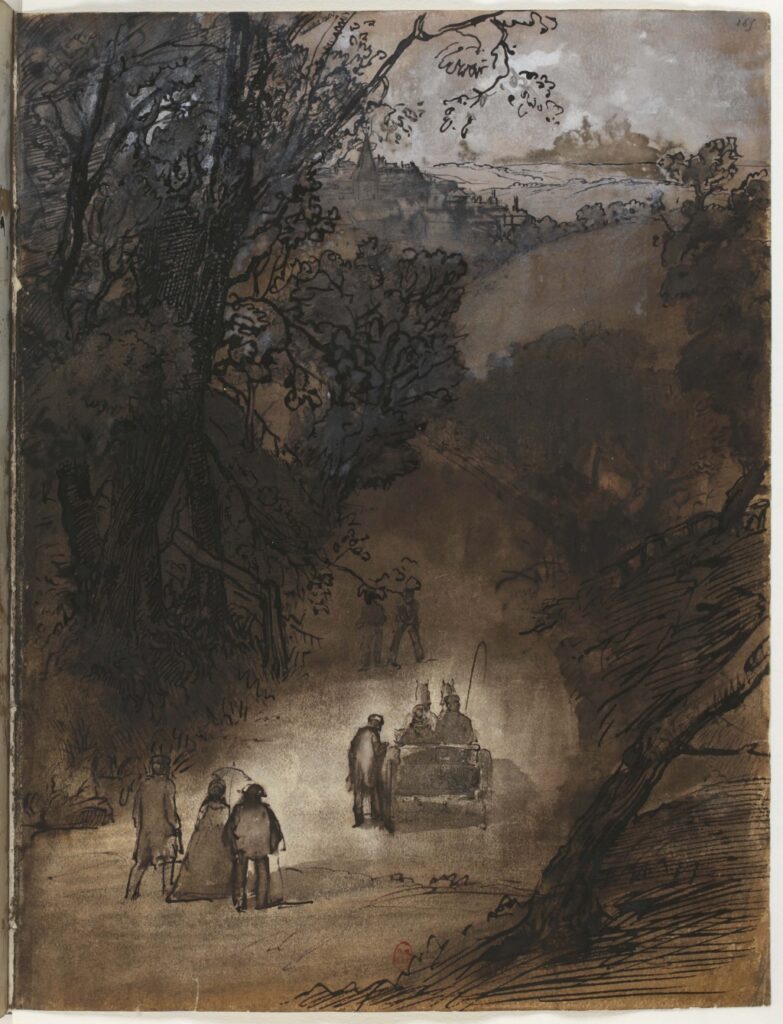
Among his early, Rembrandt-influenced etchings are self-portraits and a number of portraits of Edouard Manet. The friendship of the two artists is the subject of the Orsay show, which offers a fresh look at the work of both artists.
Born within a couple of years of each other, the two men had much in common. While they moved in the same circles, they seem to have been more rivals than true friends, and while there are many similarities between their works they took pains not to echo each other. Degas painted many self-portraits, but only one by Manet is known. Seen here, it is a lively work, full of verve, depicting the artist holding his brush and palette.
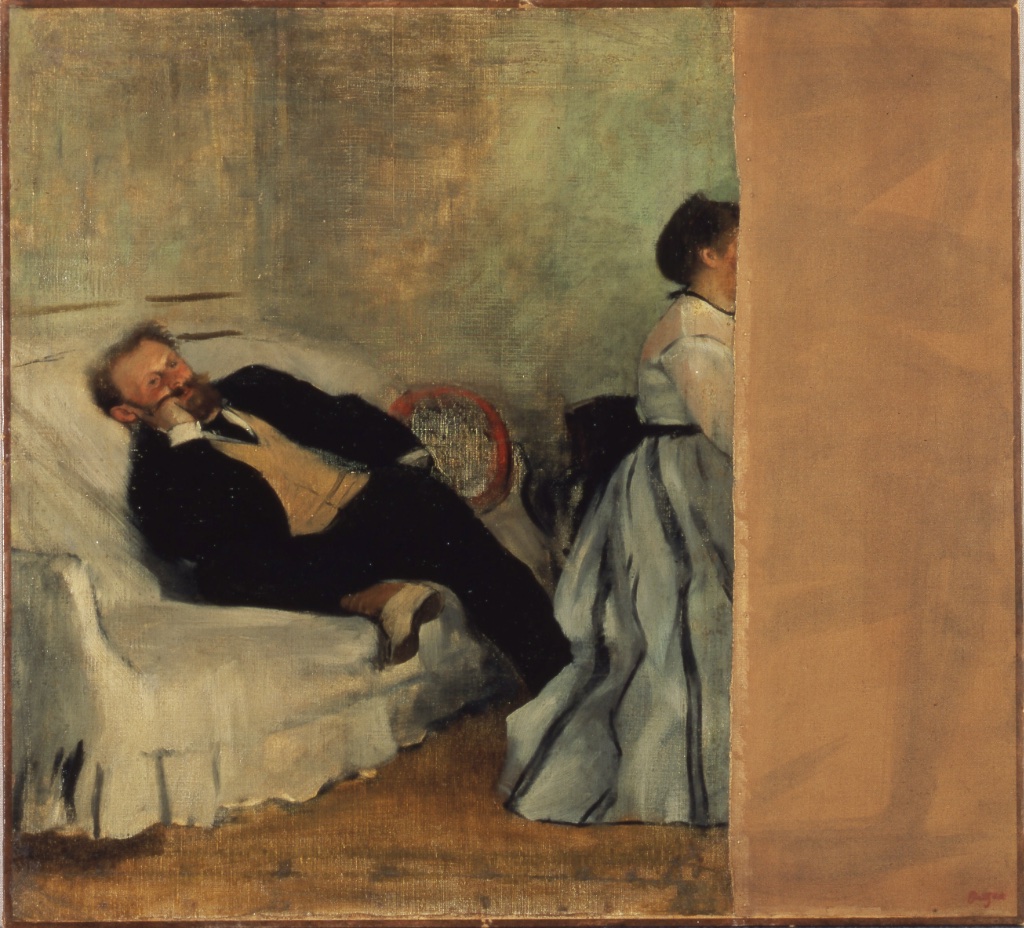
Degas made many portraits of Manet, but there are none of Degas by Manet. When Degas gifted Manet with a painting of his friend listening to his wife playing the piano, Manet, displeased with the depiction of her face, angrily cut a chunk out of the picture, causing a blowup between the two painters. In spite of it all, however, Degas seems to have truly admired Manet’s paintings and even collected them after the latter’s death.
What is really interesting is to see the work of the two artists side by side. While they had many things in common in terms of subject matter – theater scenes, bathing, beaches and so on – and unusual points of view (e.g., from the side of a stage or over the heads of spectators in the theater), and even sometimes used the same models, Manet has a lighter, brighter touch while Degas’ work is often darker in terms of both tonality and subject matter. His bleak “In a Café” (“L’Absinthe,” 1875-76) is hung next to Manet’s “La Prune” (c. 1877), a picture of a daydreaming young woman sitting in a café, cigarette in hand, but the colors are brighter and she does not appear to be on the verge of sinking into a drunken stupor, as Degas’s young woman does.
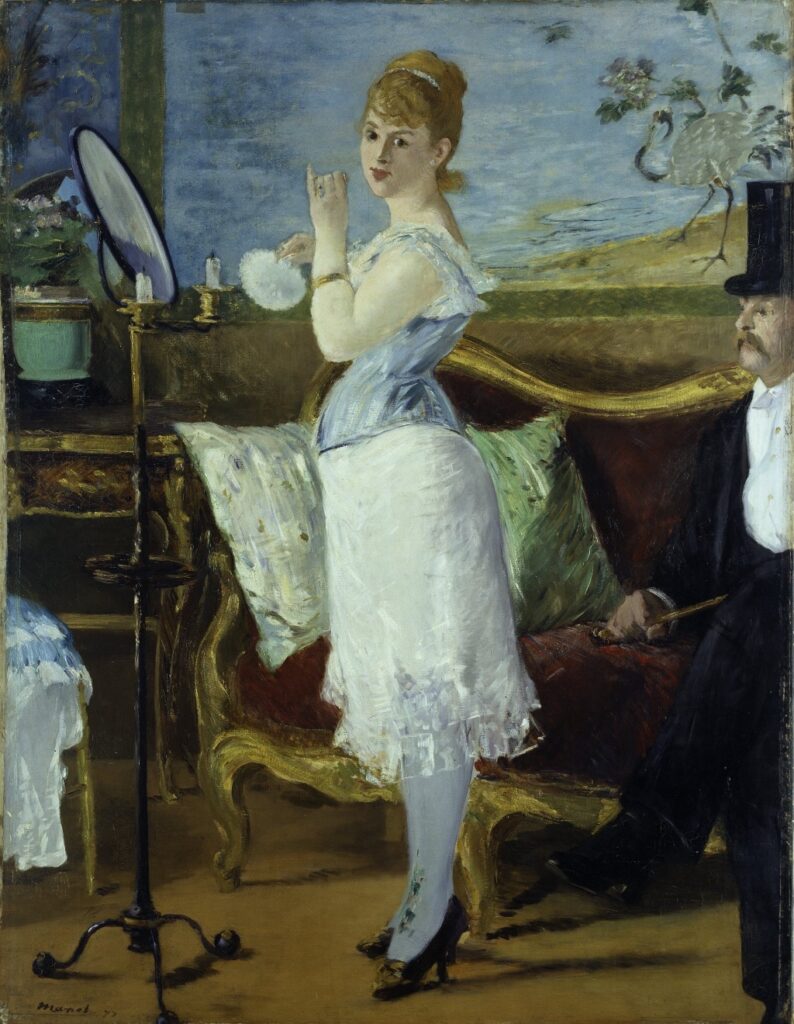
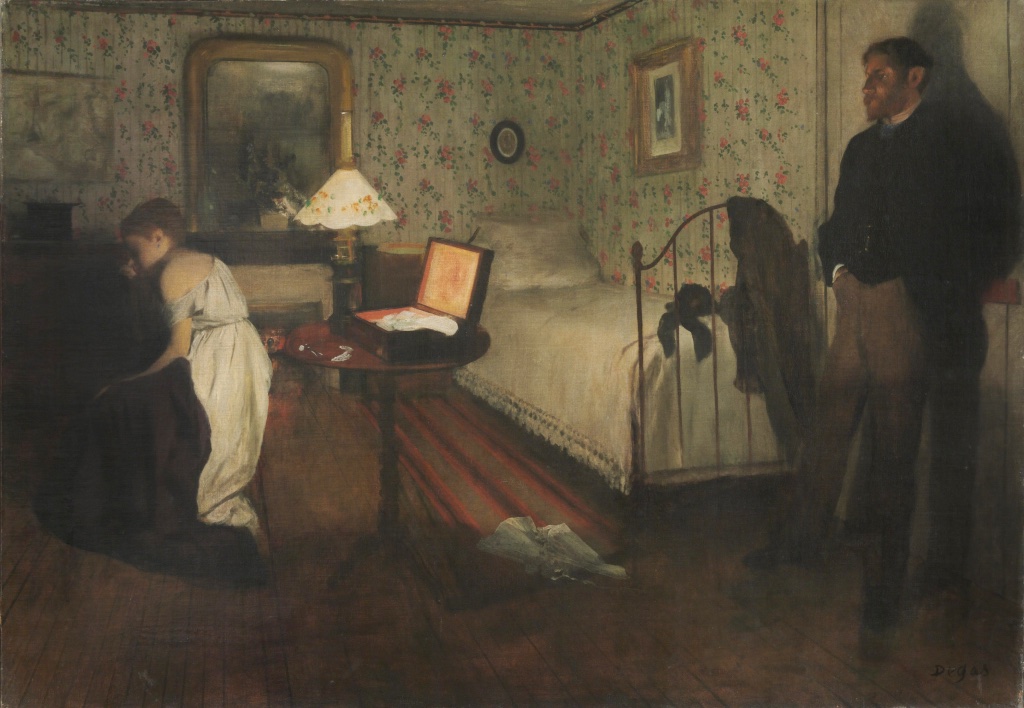
Many other pictures here are familiar – Manet’s “Olympia” (1863-65) and “Le Balcon” (1868-69), for example, but many others not, such as Manet’s “Nana” (1877), in which a half-dressed prostitute preens for the spectator while a top-hatted gentleman looks on, and Degas’ “Intérieur” (1868-69), which may depict the dark aftermath of a rape (although Degas denied it), with a man standing coolly by the door of a bedroom looking at a kneeling woman with her back to him, who seems to hide her face in shame.
Both exhibitions prove that there is more to be said about great artists we thought we knew through and through.
See our list of Current & Upcoming Exhibitions to find out what else is happening in the Paris art world.
Favorite
